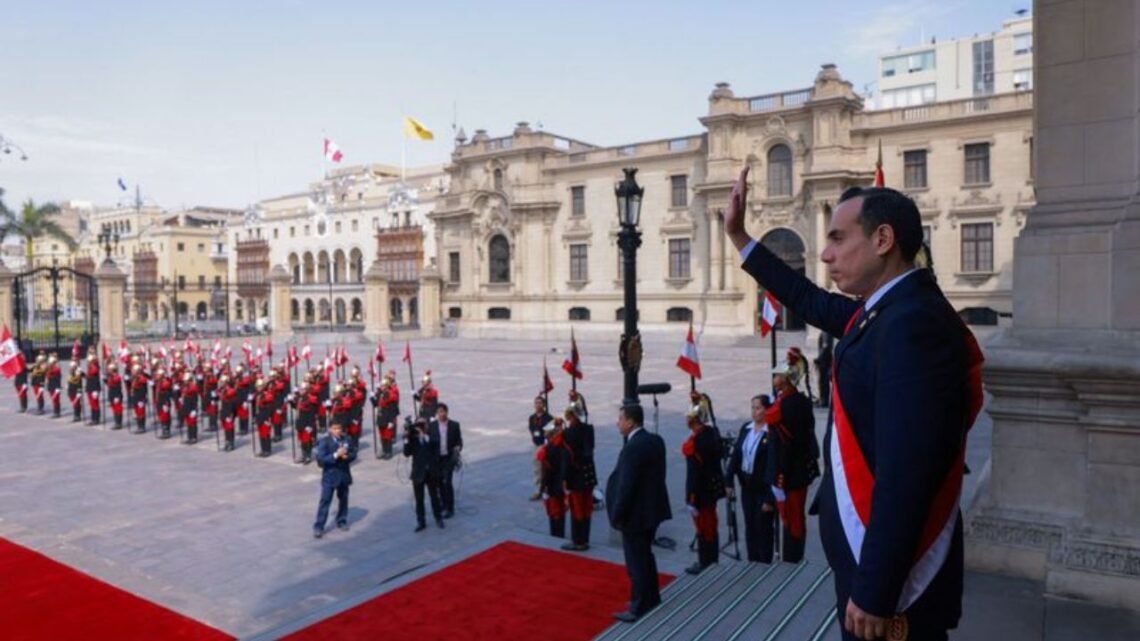On October 14, 2025, Peru’s new President José Jerí officially swore in a transition cabinet designed to restore public security, stabilize the economy, and guide the country toward general elections in April 2026 with a handover on July 28, 2026.
The new team blends legal, security, economic, and diplomatic expertise, signaling a government focused on law-and-order while maintaining investor confidence and social stability.
Why This Matters
Peru has undergone multiple leadership changes in recent years, and the Jerí administration arrives with a mandate to combat organized crime, extortion, and homicides, all while keeping the macroeconomy stable and safeguarding the rule of law.
The cabinet’s composition underscores an agenda to deliver fast, visible security results and predictable economic policy.
Key Appointments at a Glance
- Prime Minister (PCM): Ernesto Álvarez Miranda — a respected constitutional authority expected to build consensus and present a clear governing plan to Congress.
- Economy & Finance: Denisse Miralles — a market-minded technocrat focused on fiscal discipline, investment, and jobs.
- Foreign Affairs: Hugo de Zela — veteran diplomat tasked with resetting regional ties and supporting trade and tourism.
- Interior: Vicente Tiburcio — retired general positioned to lead an aggressive public security push against organized crime and extortion.
- Other portfolios include Defense (César Díaz Peche), Justice & Human Rights (Walter Martínez Laura), Education (Jorge Figueroa Guzmán), Health (Luis Quiroz Avilés), Agrarian Development (Vladimir Cuno Salcedo), Labor (Óscar Fernández Cáceres), Production (César Quispe Luján), Foreign Trade & Tourism (Teresa Mera Gómez), and Energy & Mines (Luis Bravo).
Cabinet Line-Up and Early Priorities
| Portfolio | Minister | Notable Background | Immediate Focus |
|---|---|---|---|
| Prime Minister | Ernesto Álvarez Miranda | Ex-Constitutional Court leader | Present policy plan, seek confidence vote |
| Economy & Finance | Denisse Miralles | Technocrat, macro policy | Stability, investment, employment |
| Foreign Affairs | Hugo de Zela | Senior diplomat | Strengthen bilateral ties, support exports |
| Interior | Vicente Tiburcio | Retired general | Anti-extortion, reduce homicides |
| Defense | César Díaz Peche | Defense specialist | Coordinate with Interior on security operations |
| Justice & HR | Walter Martínez Laura | Legal administration | Rule of law, judicial coordination |
| Education | Jorge Figueroa Guzmán | Public sector | Continuity of schooling & reforms |
| Health | Luis Quiroz Avilés | Health admin | Service delivery & system resilience |
| Agriculture | Vladimir Cuno Salcedo | Sector management | Rural security, productivity |
| Labor | Óscar Fernández Cáceres | Labor policy | Formalization, worker protections |
| Production | César Quispe Luján | Industry policy | MSME support, competitiveness |
| Trade & Tourism | Teresa Mera Gómez | Trade expert | Export push, tourism revival |
| Energy & Mines | Luis Bravo | Energy/mining admin | Investment pipeline, community dialogue |
What the Government Plans to Do Next
- Security Surge: The Interior-Defense axis aims to deploy targeted operations against organized crime networks, curb extortion, and improve policing in high-risk zones.
- Economic Stability: The Economy Ministry will prioritize fiscal prudence, predictable regulation, and private investment—especially in mining, infrastructure, and MSMEs—to support growth and jobs during the transition.
- Diplomatic Reset: Foreign Affairs will concentrate on regional coordination, trade facilitation, and tourism promotion to diversify growth drivers.
- Confidence Vote: The Prime Minister will submit the cabinet’s plan to Congress and seek a vote of confidence, a pivotal step for governability.
- Election Roadmap: Maintain the April 2026 election schedule and ensure an orderly transfer of power by July 28, 2026.
What Success Looks Like
The administration will be judged on measurable crime reduction, stable inflation and currency, clear investment signals, and institutional calm through the electoral season.
Rapid, credible progress on public safety—without sacrificing civil liberties—will be central to public confidence.
President José Jerí’s cabinet blends law-and-order resolve with technocratic stewardship.
If it delivers quick wins on security and sustains economic stability, Peru can navigate a tense transition toward on-time elections and a stable handover in 2026.
